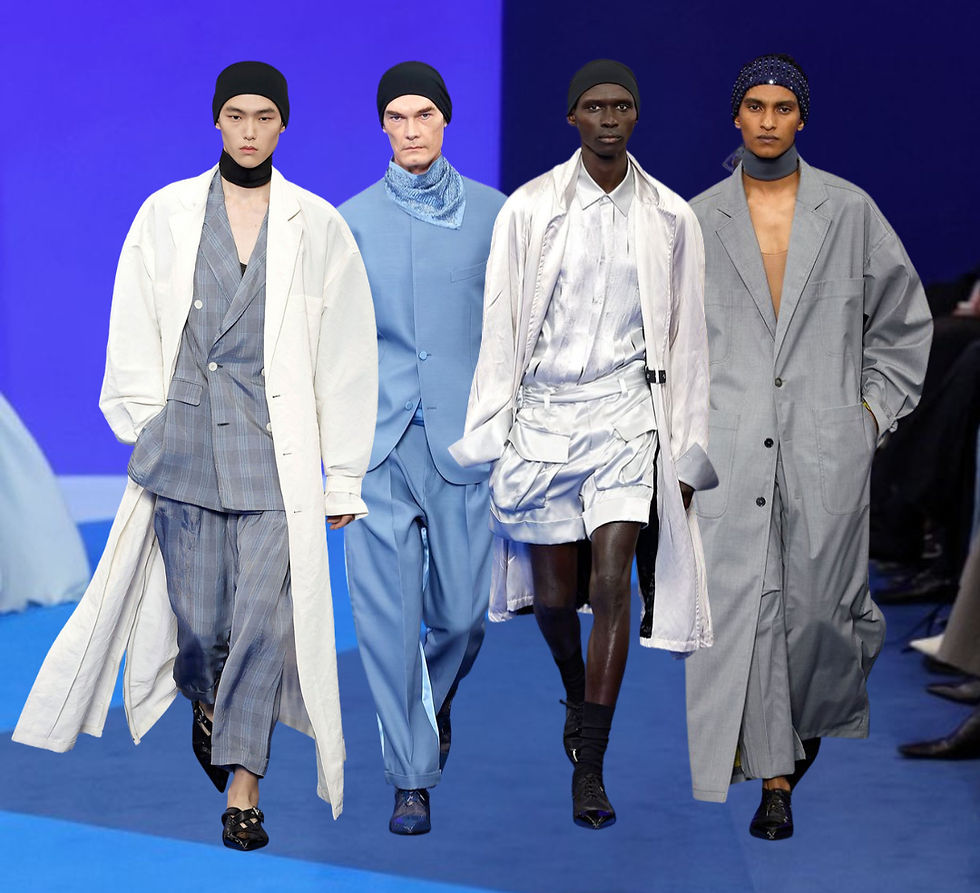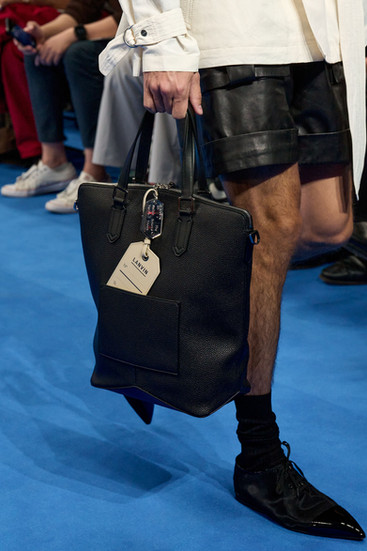LANVIN SPRING 2026: FADE TO GREY, RIBBONS AND A RETURN TO THE ROBE DE STYLE
- Camz

- Oct 1
- 3 min read
The ghost of jeanne lanvin
Some silhouettes never leave the runway, they just haunt it in new guises. For Lanvin, it’s the robe de style : drop-waisted, wide-panniered, and forever linked to Jeanne Lanvin’s legacy. Alongside it, that signature dusty blue hue, faded elegance bottled into a color. Both were born in the 1920s frenzy for Art Deco modernity, a century ago in Paris.

Now, Peter Copping, in his second outing for the house, has pulled them back into the light. His robes de style opened and closed the spring 2026 show, like glamorous apparitions making their return. The soundtrack ? Visage’s “Fade to Grey”, a nod to antique beauty and the irresistible pull of the archive.
A shape that refuses to die
Ironically, the robe de style was already retro when Jeanne Lanvin made it fashionable in the 1920s, it was her 20th-century spin on 18th-century court dress. Fast forward to today, and we’re back in love with panniers, corsets, and all things Marie Antoinette.

Copping’s versions felt softer, looser, a little casualized by what he described backstage as washing the silk. “When the pieces come in from the archive beautifully packed in these amazing boxes, the quality of them is beautiful because they are aged,” he said. Translation : elegance comes with wrinkles. Which, honestly, sounds like a life motto worth stealing.
Beyond the panniers
But robes de style were only the glittery hook. The collection’s breadth went well beyond. There were sleek knit dresses that nodded to the 1930s, but could just as easily walk into any decade and feel at home. Scarf prints were draped into asymmetric creations, fluttering between bohemian ease and couture precision. Jazz Age geometry came back as diamond-patterned embroideries, a wink to Art Deco without drowning in nostalgia. It was less “costume drama” and more “archive remixed for the TikTok era.”
Ribbons, fringes and a ghost of Alber
Ribbons wound their way through the lineup, sometimes used to weave and tie, sometimes left to dangle as fringes. For those who remember Lanvin’s glory days under Alber Elbaz, the effect was bittersweet.
Elbaz famously revived the house in the 2000s with ribbons, bows, and a certain sense of whimsy. Here, Copping’s use felt like an homage, or maybe just the echo of a memory that refuses to leave. Either way, it reminded the audience that Lanvin at its best has always balanced history with playfulness.
Tailoring for men, with a ballet twist
Copping also folded his men’s offering into the women’s show. The connective tissue was head-wraps, referencing perhaps the star male dancers of the Ballets Russes, who dazzled Paris around the same time Jeanne Lanvin was dressing her clientele. But when it comes to menswear, Lanvin still makes its money in tailoring.

Copping’s summer suits were soft and relaxed, topped with long duster coats that made “casual elegance” look effortless. A whisper of bohemia without losing the boardroom polish.
Conclusion : lanvin’s past, present and future collide
Copping’s Lanvin is not about tearing down history but about coaxing it forward, washing it, remixing it, and letting it breathe again. From panniers softened into modern robes de style to sharp tailoring drifting through Ballets Russes references, the spring 2026 collection was a reminder that archives aren’t tombs.
They’re living things, waiting to be worn again, interpreted anew, and maybe even scuffed a little. Jeanne Lanvin would recognize the silhouettes. She might even smile at the ribbons. And as “Fade to Grey” echoed through the halls, the message was clear : at Lanvin, the past isn’t gone, it’s couture with a pulse.
ALL THE LOOKS:
PRESS RELEASE:
DETAILS:













































































































































































